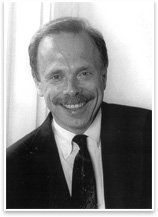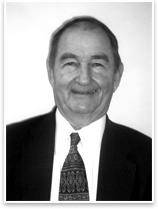
|
Two AIA Fellows Receive 2007 Jefferson Award
Summary: David Dixon, FAIA, Boston, and Michael A. Fitts, FAIA, Nashville, have been selected to receive the AIA 2007 Thomas Jefferson Award for Public Architecture. The biennial Thomas Jefferson Award recognizes excellence in architectural advocacy and achievement in three categories:
Dixon directs the Goody Clancy & Associates Inc. urban design group, and, in that capacity, has reshaped his own region—Boston and the State of Massachusetts—and other areas as diverse as Miami; Cincinnati and Columbus, Ohio; Chicago; and post-Katrina New Orleans. “[N]o urban designer of our time has had so great or so positive an impact on my city of Boston,” writes Boston Globe critic Robert Campbell, FAIA, supporting Dixon’s nomination. “David’s projects have been major in scale—the Turnpike Air Rights Vision, the Eastern Cambridge plan, the recent work for Harvard’s campus extension into Allston—but what I find even more remarkable about them, in the heated political climate of this city, is David’s ability to bring players and stakeholders of all points of view together to achieve the kind of consensus that allows for action.” No urban designer of our time has had so great or so positive an impact on the City of Boston An advocate for density as an essential tool for revitalizing urban communities, Dixon, as 2003 president of the BSA, organized the first “National Conference on Density: Myth and Reality,” bringing architects together with public officials, planners, developers, and community activists. He followed in 2004 with “Reinventing the Urban Village,” focusing on neighborhood density. Dixon possesses “the rarest combination of gifts,” writes Boston Redevelopment Authority Chief Architect Robert Kroin, AIA, in his letter of support: “the intelligence to … get to the heart of the matter without being distracted by the superficial … the talent to synthesize the results of analysis and to present them in a way that is illustrative and revealing; [and] the courage to bring a clear, principled, personal point of view to the issues that tells us what he believes in and why we should, too.”
“Mike began his career as an engineer,” wrote Edward A. Feiner, FAIA, himself a recipient of the award, in a letter supporting the nomination. “His passion for building design drew him to architecture … Today, public projects deal greatly with contract language and legalities. Mike’s response was to acquire an education in law so that he would excel in all aspect of his job.” Fitts’ reputation is so strong that in Tennessee no federal, state, or metropolitan building design goes forward without his guidance Fitts was jointly nominated for the honor by the Tennessee Society of the AIA, AIA Middle Tennessee, and the national AIA Public Architects Committee Knowledge Community, which Fitts chaired in 1990 and through which he was instrumental in establishing the Jefferson Awards in the first place. He was elevated to AIA fellowship in 1991. The designer’s manual program Fitts developed for Tennessee blends aesthetics with use of new technologies and is a national model. His ongoing refinement of design competitions includes compensation for design entries. “Mr. Fitts … modernized the concept of design competitions to produce civic buildings of great distinction,” wrote Tennessee Governor Phil Bredesen in support. “His reputation is so strong that in Tennessee no federal, state, or metropolitan building design goes forward without his guidance … It seems only fitting for him to receive the award he helped establish as one of the founders of the AIA Committee for Public Architects.”
|
||
Copyright 2007 The American Institute of Architects. All rights reserved. Home Page |
||
news headlines
practice
business
design
Recent related
› Edward Larrabee Barnes, FAIA, Selected for 2007 AIA Gold Medal
› 2007 Architecture Firm Award Goes to Leers Weinzapfel
› Lance Jay Brown, FAIA, Awarded Topaz Medallion
› NOMA Receives Whitney Young Jr. Award
› Vosbeck Honored with Kemper Award for Service to the AIA
› Vietnam Veterans Memorial Receives Twenty-five Year Award
2007 Institute Honor Awards for Collaborative and Professional Achievement
Chair Leslie Thomas, AIA
Stanford Britt, FAIA
The Honorable Pat Kelly
Joseph Oppermann, FAIA
Rives Taylor, AIA

 Category 1: Private-sector Architect
Category 1: Private-sector Architect Category 2: Public-sector Architect
Category 2: Public-sector Architect